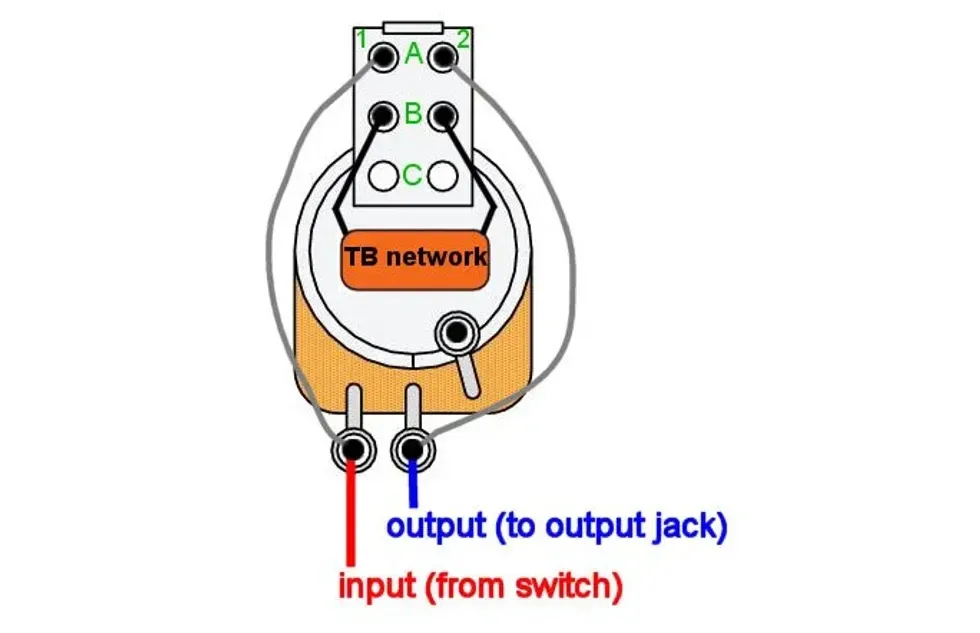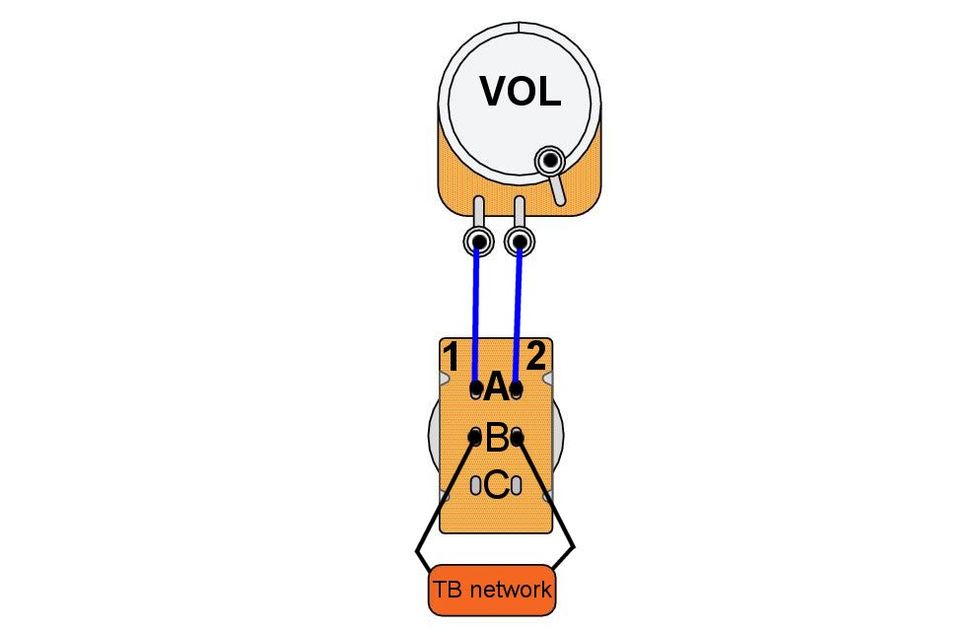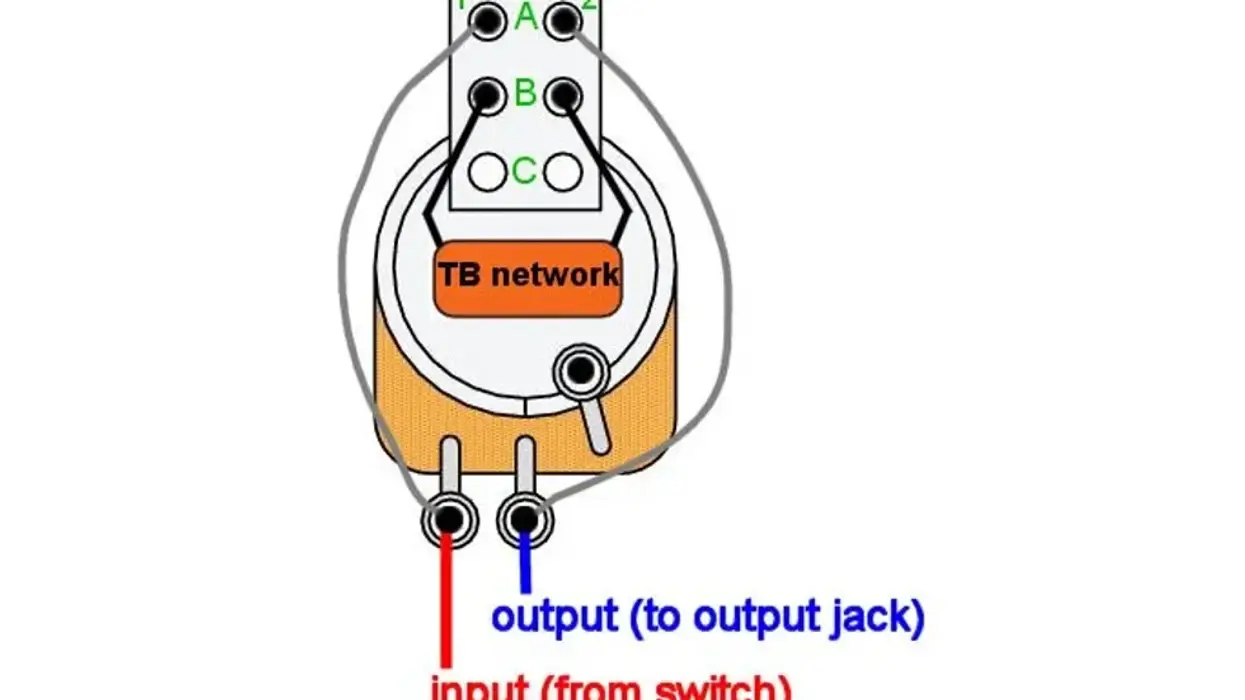Hello and welcome back to Mod Garage! This month, we will take a deeper look into a problem that occurs when using a treble-bleed network on a volume pot. We’ve talked about treble-bleed networks in detail before. A lot of players, including myself, can’t live without one, while other players don’t like the effect a treble-bleed network will have on their tone when rolling back the volume. When using a treble-bleed network together with an old-school fuzz or booster, you can get into some trouble. Same for using such a device with an active guitar circuit or after an active buffer device. The tone will start to sound harsh and not desirable at all. So why is this and what can be done about it?
To put the problem as simply as possible: The input impedance of a classic fuzz or booster design is very low, usually lower than 20kohms. Together with the pickup inductance (usually 2.5 H up to 8 H) it creates a low-pass filter, a happy accident with an ear-friendly result. When a fuzz pedal, for instance, receives a kind of neutral carrier signal, it results in good, harmonic-sounding overtone content. But this balance is very fragile, so if the fuzz receives an input signal containing a lot of high end (caused by a treble-bleed network, buffer, active guitar signal, etc.), that balance is disturbed. A lot of intermodulation distortion will be generated between the overtones of the input signal and the generated overtones of the distorted signal. Sum tones and difference tones will be present, which sound dissonant and not very pleasant. So, we can say that the natural filtering of the guitar signal at the input of the pedal is essential for the typical, well-known fuzz tone.
“A treble-bleed network can help you to cut through the mix when you play with reduced volume, so this is definitely a mod to consider.”
I’ve tried to simplify this complex subject wherever possible, hoping that it’s not too much theory. But I think you get the problem. So, what can be done to get rid of it? Don’t worry, you don’t need to remove your beloved treble-bleed network; we will simply make it switchable. This way, you can have both options in your guitar: treble-bleed network engaged and treble-bleed network completely shut off. This mod is not very complicated. All you need is a push-pull or push-push pot with a DPDT switch of your choice or a stand-alone DPDT switch. We will break down the mod into two possibilities:

Fig. 1
1. Replacing the volume pot. The easiest way to make the treble-bleed network switchable is by replacing your standard volume pot with a push-pull or push-push pot of your choice. The benefit of this method is that all connections are made on the new volume pot, so you will have no extra wires running through the circuit. A downside in a passive circuit can be that it’s hard to find a new pot with a good working taper as a volume pot. Usually, manufacturers only stock one version in 250k, 500k, and sometimes 1M, but only with one given taper.
Start to remove the treble-bleed network from your volume pot; we will reuse it with the new pot. Disconnect the wires from the pot and remove it. I prefer to solder all possible connections on a push-pull or push-push pot outside the guitar, which can make things much easier. Here is the wiring diagram for this operation (Fig. 1).
After installing the treble-bleed network to the switch and soldering the two wires from the switch to the pot, you can install the new pot and reconnect the wires. In the diagram, the treble-bleed network is engaged when the pot is pushed down and in its normal position, assuming that this is the standard operation, and you only want to shut down the treble-bleed network when using a fuzz or booster. If for any reason you want the treble-bleed network to be engaged when the pot is pulled up, this is easy to do. Solder the wire on A1 to C1 and the wire from A2 to C2 and you are done.

Fig. 2
2. Adding the treble-bleed network function to a tone pot or using an additional switch. If you want to add the mod to one of the tone pots rather than to the volume pot, the basic operation stays the same: Replace the pot with a push-pull or push-push pot of your choice. But now you can’t do all connections on this pot; the wires from A1 and A2 will have to go to the volume pot. This is also the way to go if you want to add an additional DPDT switch to the guitar, so you don’t need to replace a pot. Here is the wiring diagram for this option (Fig. 2), showing a DPDT switch. If you want to replace one of the tone pots, you naturally have to reconnect the wires and the tone cap from the pot to the new one.
All the rest stays the same. If you want the treble-bleed network to be engaged when the switch is up, simply solder A1 to C1 and A2 to C2.
This mod is also for all players who want to have both options but do not plan on using a fuzz or booster. Without a treble-bleed network, the tone gets noticeably warmer when rolling back the volume and a lot of players regard this as a kind of second tone you can have from your guitar. But in some cases, a treble-bleed network can help you to cut through the mix when you play with reduced volume, so this is definitely a mod to consider.
That’s it! Next month we will have a closer look into the PRS sweet switch and how to substitute it, so stay tuned! Until then ... keep on modding.


















![Devon Eisenbarger [Katy Perry] Rig Rundown](https://www.premierguitar.com/media-library/youtube.jpg?id=61774583&width=1245&height=700&quality=70&coordinates=0%2C0%2C0%2C0)



















